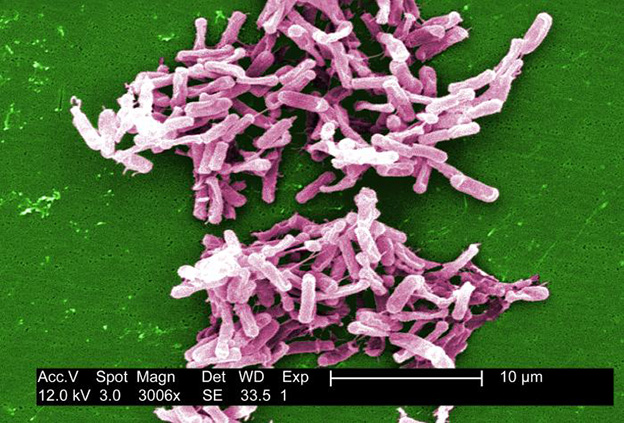Researchers develop world’s most sensitive test to detect and diagnose superbugs

Gram-positive C. difficile bacteria from a stool sample.
Infectious diseases such as hepatitis C and some of the world’s deadliest superbugs—C. difficile and MRSA among them—could soon be detected much earlier by a unique diagnostic test, designed to easily and quickly identify dangerous pathogens.
Researchers at McMaster University have developed a new way to detect the smallest traces of metabolites, proteins or fragments of DNA. In essence, the new method can pick up any compound that might signal the presence of infectious disease, be it respiratory or gastrointestinal.
“The method we have developed allows us to detect targets at levels that are unprecedented,” says John Brennan, director of McMaster’s Biointerfaces Institute, where the work was done. This new method is described online in the journal Angewandte Chemie International Edition.
“The test has the best sensitivity ever reported for a detection system of this kind – it is as much as 10,000 times more sensitive than other detection systems,” he says.
Using sophisticated techniques, researchers developed a molecular device made of DNA that can be switched ‘on’ by a specific molecule of their choice—such as a certain type of disease indicator or DNA molecule representing a genome of a virus—an action that leads to a massive, amplified signal which can be easily spotted.
Another important advantage of the new test, say researchers, is that the method does not require complicated equipment so tests can be run at room temperature under ordinary conditions.
“This will be the foundation for us to create future diagnostic tests,” explains Yingfu Li, a professor in the Departments of Biochemistry and Biomedical Sciences, Chemistry and Chemical Biology.
“This invention will allow us to detect anything we might be interested in, bacterial contamination or perhaps a protein molecule that is a cancer marker. Our method can sensitively detect all of them, and it can do so in a relatively short period of time.”
Researchers are currently working to move the test onto a paper surface to create a portable point-of-care test, which would completely eliminate the need for lab instruments, allowing users—family physicians, for example—to run the test.
The Biointerfaces Institute has developed a series of paper-based screening technologies which enable users to generate clear, simple answers that appear on test paper indicating the presence of infection or contamination in people, food or the environment.

